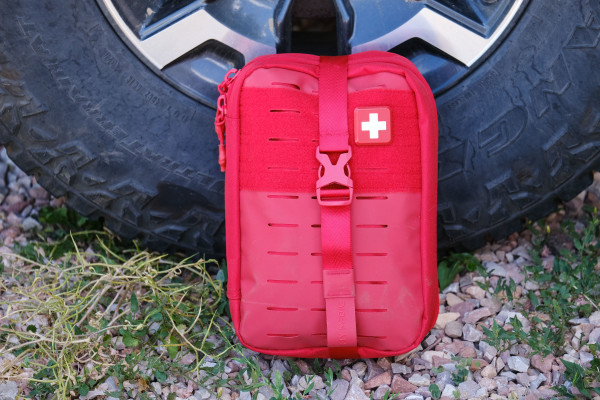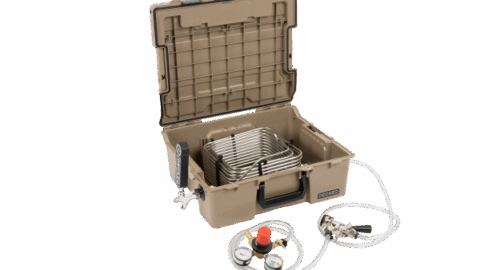You’ll need it while you’re working on the van. Accidents happen, especially when power tools are involved. So getting your first aid kit well-stocked now will save you headaches later.
Of course, once your van is up and running and you’re out in the wild, your first aid kit will need to be stocked with supplies tailored to outdoor adventures. Since those adventures vary wildly, so will the supplies in your first aid kit. But there are some fundamental items that should be in every first aid kit.
Here’s what you’ll need to get your first aid kit stocked and ready for vanlife.
Basic supplies for a vanlife first aid kit
I want a first aid kit that’s comprehensive enough to handle common injuries, keep me more comfortable when things get rough, and in general address the larger issues that buy me time while the whirly bird is in route if things ever get really serious. (NOTE: They can, they have, and the helicopter doesn’t always show up).
The following is a good list to get you started, but don’t forget to add in your own items specific for your medical needs and outside-the-van adventures.
Bandages and dressings: first aid kit meat and potatoes
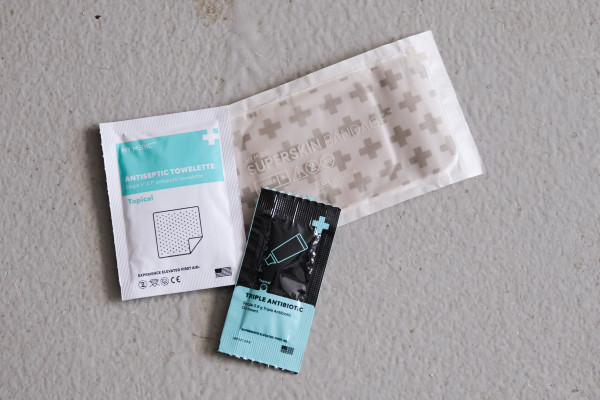
You’re likely to encounter a lot of minor cuts and scrapes while on your vanlife journeys. So bandages and dressings will get a lot of use. There are a ton to choose from — different sizes and types, some are anti-stick, others are pre-loaded with antiseptic, and so on — and you’ll want a good assortment. Here’s a quick list:
- Adhesive bandages of assorted sizes.
- Gauze pads. if you’re using enough of these, it’s time to call the pros before the bleeding stops.
- Adhesive tape. Tape can pull a lot of duties, from taping gauze to cuts and abrasions, to supporting dislocated fingers and toes.
- Elastic bandages (like ACE bandages or K-tape) for sprains or general support/soreness.
Wound care: keeping cuts clean
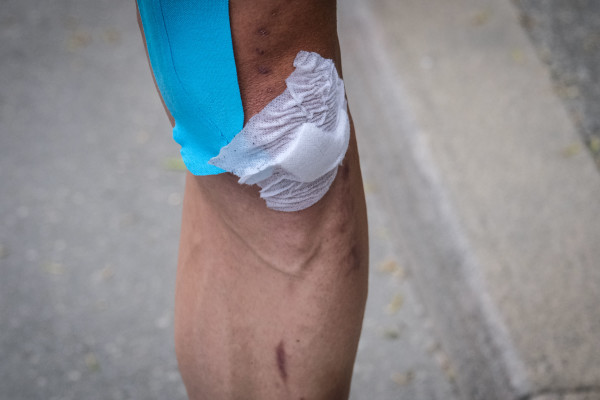
Along with all those bandages and dressings you’ve stocked in your vanlife first aid kit, you’ll need a few key supplies to clean the wounds before wrapping them. Cleaning wounds prevents infections, can speed up healing, and can even help reduce pain. You’ll need:
- Antiseptic wipes or solution (like alcohol wipes or iodine).
- Hydrogen peroxide or saline solution for wound cleaning.
- Antibiotic ointment (such as Neosporin).
Tools and Instruments: first aid kit hardware
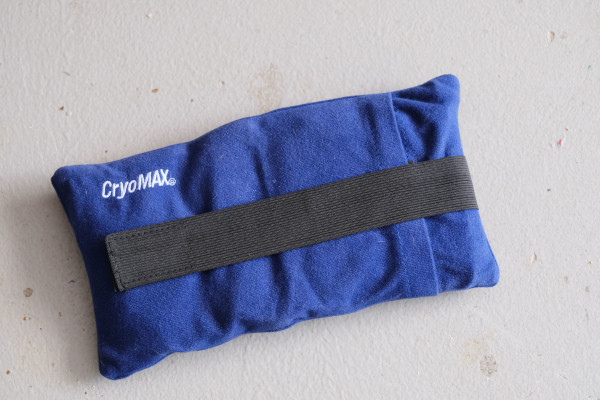
While you can perform a lot of first aid with your hands (preferably while wearing gloves to prevent infection), sometimes you’ll need specialty equipment. Think simple here; your primary concern is addressing the basic problem, not performing surgery. Leave the heavy-duty stuff to the pros if you can. Here’s a quick list of tools and instruments that are helpful to have in your vanlife first aid kit:
- Tweezers for splinter removal.
- Scissors, for cutting tape or clothing.
- Thermometer
- Disposable instant cold packs. You can also include reusable ice packs or a plastic bag with ice from the cooler.
Medications: aches, pains, stings, and sneezes
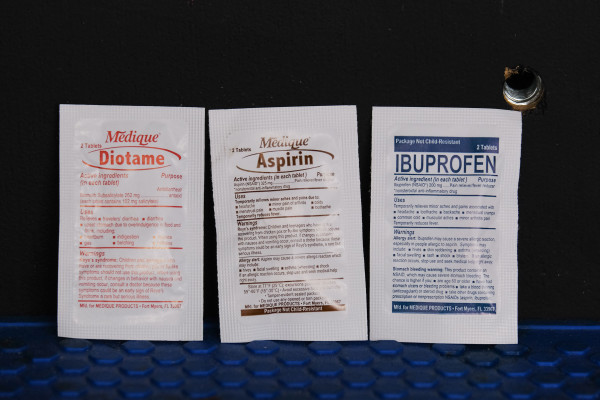
It’s good to have some basic medications in your vanlife first aid kit, as well as any specialty prescriptions you might have. But be careful when administering these medications. They can cause reactions you may not expect, especially if you’re doling them out to people you don’t know. Use your best judgement. Here are some common medications that make sense in your vanlife first aid kit:
- Pain relievers (such as ibuprofen or acetaminophen).
- Antihistamines for allergic reactions (like Benadryl).
- Antidiarrheal medication.
- Antacids such as TUMS.
- Any prescription medications you or your crew may need.
Personal Protection: sun and bugs
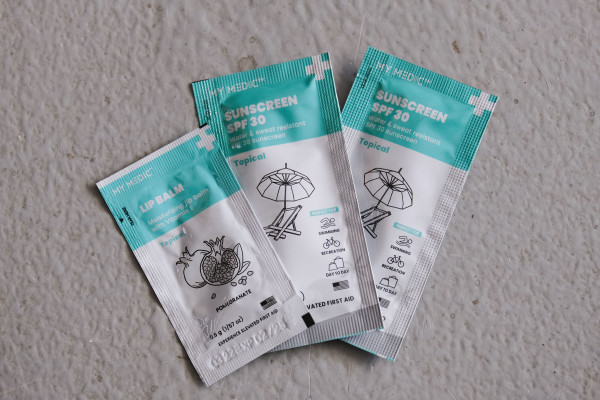
Now more than ever, solid sun protection matters. While it’s best practice to have a full tube of sunscreen on hand, it doesn’t hurt to pack a few extras in your first aid kit. Same goes for bug repellent. You probably want to bring a full tube or spray bottle, but it’s a good idea to have some extras in the first aid kit should you run out.
- Sunscreen – your mother was right, it’s a good idea. And now it’s a necessity.
- Insect repellent – because mosquitoes are the worst.
- Lip balm with SPF. Make sure you get the SPF kind, as it adds sun protection.
Emergency Equipment: when things get gnarly
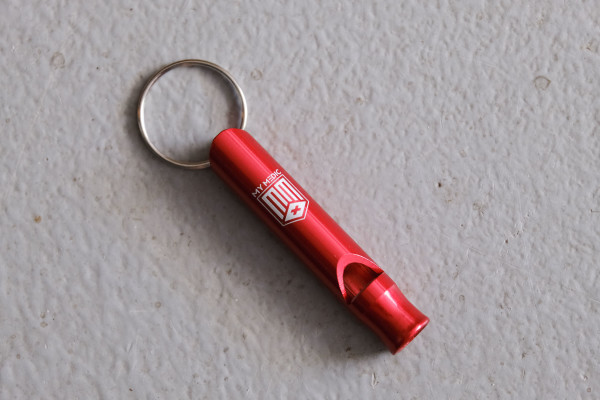
While the real complex stuff is best left to the pros, sometimes you don’t have any other choice than to tackle serious situations head-on. Your vanlife first aid kit should have enough of the basics to take care of an injured person if emergency crews can’t reach you. Here are a few items that will come in handy:
- CPR mask or face shield.
- Emergency blanket.
- Whistle or signal mirror.
- Tourniquet. Be careful with this one; it’s best to take a first aid training course to learn how to use a tourniquet properly. It’s just as easy to make an injury much worse by applying one incorrectly. Tourniquets are used to stop the blood flow of a major artery, and it’s something you’ll need to do it very quickly. Only use tourniquets in exceptionally severe injury cases.
Documentation: how to administer first aid
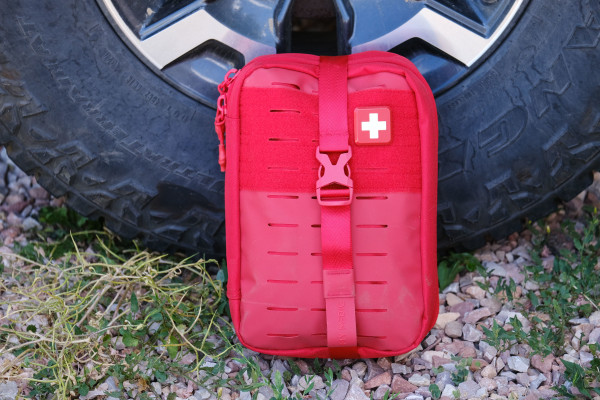
Even if you’ve taken a first aid course (and you definitely should), in the heat of the moment you may need guidance. It’s a great idea to include some easy-to-read documents in your first aid kit that you can cite on the fly. These are also great to review before every trip to make sure you’ve got your first aid basics straight. Some good ones to include are:
- First aid manual or instructions (Knowledge is everything, and you won’t have time to read in an emergency).
- Emergency contact information for your party members.
- Medical history forms, especially when you’re traveling out of your home country.
Other Important First Aid Supplies
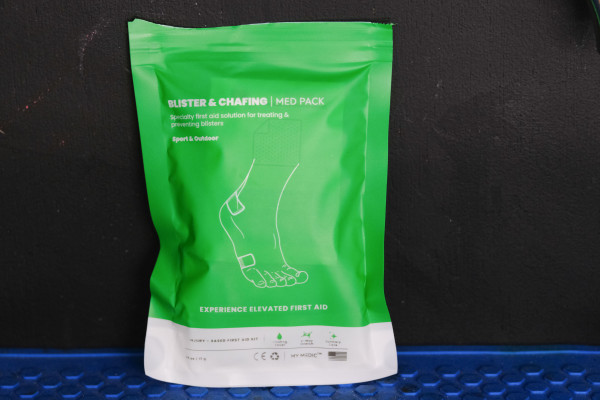
If you’ve still got some extra space left in your vanlife first aid kit, here are a few nice-to-haves that could come in handy:
- Moleskin or blister pads for foot care.
- Eye wash solution or eye drops.
- Splinting materials (such as SAM splints)
Updating Your First Aid Kit
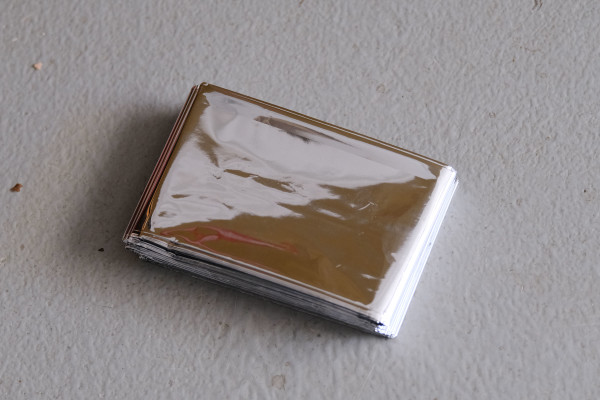
Remember to periodically check your first aid kit and replace any expired items/meds. Check that items haven’t been rattled to dust from all your previous adventures, too.
Additionally, tailor your kit to the specific needs of your group and the environment you’ll be traveling through. If you or anyone in your group has specific medical conditions, make sure to include any necessary medications or supplies.
How to Contact Emergency Services
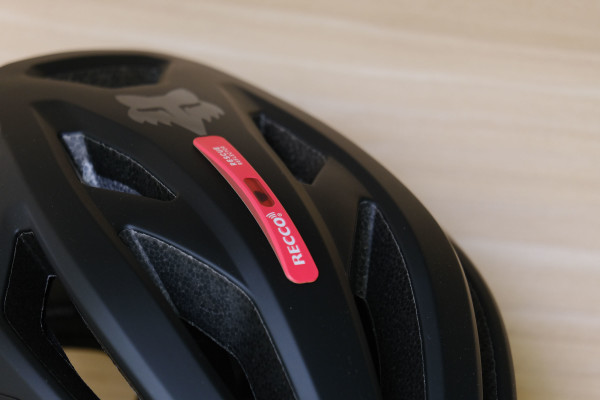 The Recco Rescue Reflector mounted on the helmet features an adhesive backing. Other styles include reflectors with a loop for attaching to a backpack strap. Some reflectors are even integrated into clothing like jackets.[/caption]
The Recco Rescue Reflector mounted on the helmet features an adhesive backing. Other styles include reflectors with a loop for attaching to a backpack strap. Some reflectors are even integrated into clothing like jackets.[/caption]First Aid is just that: the first address of a medical issue. Contain the bleeding and get to a hospital as soon as possible for more serious injuries. Being able to dial out to 911 when in distress is vital. As important as all of that first aid kit know-how and gear is, it’s often just a preamble to getting more medical help.
When things go bad, they can go bad very quickly. Consider a Garmin InReach with SOS capability if you’re planning on getting off-grid. And be sure you know how your phone emergency capabilities work. iPhones, for example, now have SOS signals that work exactly like satellite phones to alert first responders.

How to connect to a satellite with your iPhone 14 or newer:
- Be outside with a clear view of the sky and the horizon.
- Be aware that trees with light foliage might slow down the connection. Dense foliage, hills or mountains, canyons, and tall structures might block the connection.
- Hold your iPhone naturally in your hand. You don’t need to raise your arm or hold your phone up, but don’t put it in a pocket or backpack.
- If you need to turn left or right or move to avoid a blocked signal, your iPhone provides onscreen instructions. The satellite connection can be maintained even if your phone screen is locked.
- Satellite connectivity might not work in places above 62° latitude, such as northern parts of Alaska.
The easy way: buying a pre-stocked first aid kit
Do-It-Yourselfers might enjoy stocking a custom first aid kit, but it’s just as easy to buy one pre-stocked and ready to go. The first aid kit pictured throughout this article is the My Medic MYFAK. It’s well-stocked for most vanlife adventures, though there are other offerings with even more gear if you’re getting off-grid.
And My Medic also sells refill packs so you can update your first aid kit quickly and easily. These pre-packaged first aid kits are well worth the money, and they usually have extra space within the bags for extras you might need for your particular needs.

